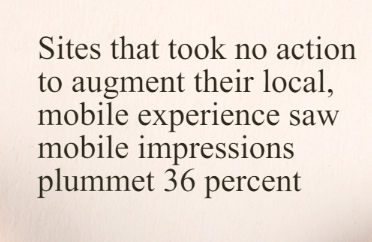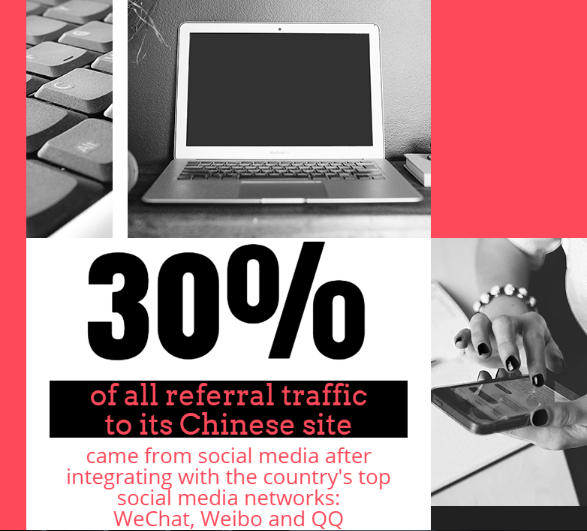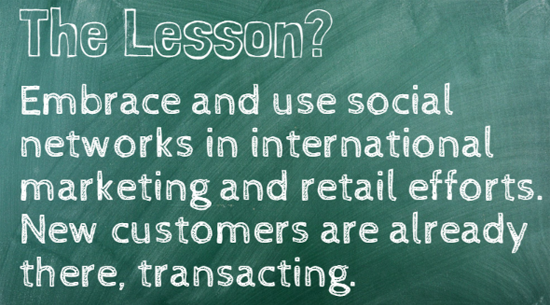4 Online Trends Ecommerce Companies Must Embrace to Thrive Internationally

Companies operating ecommerce sites that are searching for new customers and revenue streams, should consider launching localized websites in international markets.
For many U.S. ecommerce sites, a sizable amount of website traffic hails from other countries. However, the conversion rate for these global shoppers is quite low - particularly from non-English speaking markets. These visitors struggle to navigate the site, find items they want and successfully purchase them.
Have you ever tried to shop for and then buy products described in a language you don't understand, measured in units you're unfamiliar with, denominated in a currency you don't carry in your wallet, and using a foreign payment method? Give it a try sometime. "Frustrating" only begins to describe the process.
Creating locally optimized sites for these markets is often quite affordable - and with complementary marketing efforts, these sites can open a business to large numbers of new customers, improve the conversion rate on existing international traffic, and create a large and ever-increasing source of revenue from customers around the world.
So, what global Web trends are influencing companies today, and maximizing their ecommerce sales?
Mobile Is Big In Emerging Markets...
As most know, Google made changes to its search algorithm in April to boost the ranking of mobile-friendly pages on searches made on mobile devices. If a page's text and content remained optimized for desktop browsers, Google warned, it could see a "significant decrease in rankings in mobile search results."
Further, Google said, this update would affect searches from mobile devices across all languages and locations.
Mobile-friendly site design has been a best practice for years, but companies that had been dawdling sprang into action, especially after learning that Microsoft's Bing would also soon penalize pages that weren't optimized for mobile.
Google's update didn't generate the "mobilegeddon" doomsday impact on U.S. English websites that many bloggers feared. However, the impact was different for companies that operate localized websites in international markets.
Clients that followed through on recommendations to augment their local mobile user experience increased mobile impressions nearly 25 percent. Sites that took no action saw mobile impressions plummet 36 percent. Ouch.

The data doesn't lie: Google's algorithmic changes have an impact, particularly on international sites. Launching a translated site isn't enough. Companies must take steps to ensure that traffic - and conversion and sales - aren't impacted in global markets when SEO changes like this occur.
Companies must also monitor relevant international search engines for similar changes. For example: About 60 percent of online Russians use the search engine Yandex. China's primary search engine is Baidu.
...But Social Is Even Bigger
The proliferation of social networks and smartphone usage has completely revolutionized online shopping in many emerging markets.
Take China, for instance. According to a recent China Daily story, user recommendations made on regional social networks such as WeChat, QQ and Sina Weibo have become "the most important factor in their online shopping decision," the story says. This is especially compelling, since entrepreneurs can launch stores exclusively within these social networks, eliminating barriers between browsing and buying.
Companies that use these networks in international markets see a lift in local sales. Again, let's look at China. One company expanded into the country about a year ago. Not long after, it integrated functionality with social networks WeChat, Weibo and QQ. In the last three months, 30 percent of all referral traffic to its Chinese site hailed from social media sites. Further, this new traffic currently accounts for about 10 percent of the site's total revenue - and it's growing fast.

That's an exceptional showing for a Western company still in the early days of connecting with the Chinese market.

Leverage Sites for Multiple Markets
As a company expands into international online markets, understand that consumers living beyond those markets' borders will be visiting, and shopping, its new website. This poses a compelling opportunity to woo customers the company wouldn't otherwise attract, and generate additional revenue - at no extra cost to the enterprise.
Consider the business case for launching a localized website for Spanish-speaking U.S. Hispanics. It's a savvy move: the collective buying power of U.S. Hispanics now exceeds $1.5 trillion, up 50 percent since 2010. The U.S. is home to nearly 54 million Hispanics - about 17 percent of the nation's population - and more than 70 percent of these consumers speak Spanish at home. This Hispanic population continues to grow - projected to reach 128.8 million, or nearly one-third of the U.S. population, by 2060.
While that's a huge market, Spanish-speaking consumers outside the U.S. are also out searching for the products they need online. They're finding them on these U.S. Hispanic websites. Suddenly, a website originally intended to serve one large market is serving many.
Indeed, research indicates that U.S. Spanish sites following our best practices should expect 60 percent of its organic traffic from Latin American markets. In fact, we often find that launching a Spanish website aimed at the large U.S. Hispanic audience becomes the impetus behind a broader international growth strategy.
The Value of Optimization
Of course, launching and maintaining translated websites will generate traffic, engagement and revenue, but this des not guarantee business success in international markets. That's because - contrary to what many believe - translating a website is not a translation project.
Website localization is, in fact, about creating significant and sustained business success in international markets. This requires technologies, tools and teams that drive international traffic and engagement to quickly generate ROI and meet business goals ...and whenever possible, exceed them. To do this requires much more than merely translating your website.
As a company surveys its options in the website globalization space, it should consider the effort and resources its organization currently invests in finding new website visitors, creating promotions designed to resonate, and then tweaking and testing the user experience to maximize engagement and conversion. These activities are also crucial to the success of localized websites. An enterprise will want to avoid the make the mistake of launching a translated website without a plan for generating the traffic and conversion on which its success will ultimately hinge.








